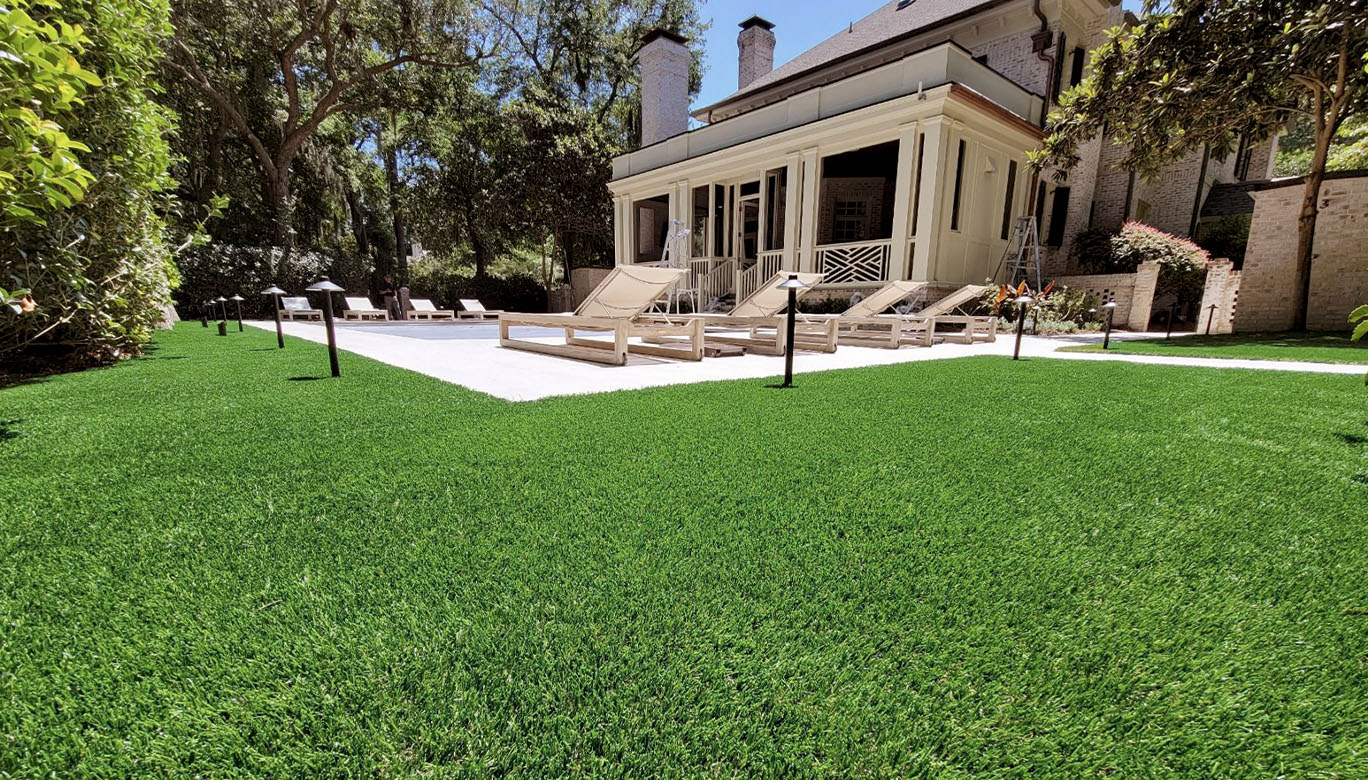Delve Into the Environmental Conveniences of Opting for Artificial Turf Solutions
The adoption of fabricated lawn solutions provides a compelling chance to resolve pushing environmental obstacles. By significantly decreasing water usage and lessening the application of damaging chemicals, these options not just advertise sustainable landscaping yet likewise safeguard neighborhood ecosystems.
Water Conservation Benefits
One of the most significant benefits of man-made grass is its capacity to preserve water. In contrast, artificial grass does not require watering, substantially lowering the general demand for water resources.
By eliminating the demand for regular watering, artificial turf adds to lasting landscape practices and aids alleviate the environmental impact of extreme water consumption. In addition, the conservation of water encompasses the decrease of runoff, which can lead to dirt disintegration and river contamination.
In addition, the setup of synthetic grass allows homeowners and towns to assign water resources more successfully, concentrating on vital uses such as alcohol consumption water and agriculture. The shift towards synthetic grass not just advertises liable water usage yet also lines up with broader ecological goals targeted at maintaining natural resources.
As neighborhoods increasingly prioritize sustainability, the water preservation benefits of synthetic grass present a compelling instance for its adoption in commercial and property landscaping jobs.
Lowered Chemical Use
The change to synthetic grass substantially decreases the dependence on chemical treatments frequently made use of in natural yard upkeep. Typical turf management typically entails the application of plant foods, chemicals, and herbicides to advertise development and control parasites. These chemicals can posture risks to human wellness, regional wild animals, and the environment, adding to dirt and water contamination.
On the other hand, synthetic grass removes the need for these unsafe materials. When installed, it calls for very little upkeep, largely including routine cleansing and occasional infill replenishment. This decrease in chemical usage not only profits the prompt setting but additionally contributes to more comprehensive eco-friendly security. By decreasing the launch of artificial compounds into the ecological community, artificial lawn advertises much healthier dirt and water supply.
Additionally, the absence of chemical drainage connected with synthetic grass installations helps safeguard local rivers from contamination, supporting marine life and preserving biodiversity. Arizona turf. As areas significantly focus on sustainable practices, selecting artificial grass provides a sensible solution that straightens with ecological conservation objectives. Through this shift, property proprietors can enjoy lavish eco-friendly spaces without jeopardizing ecological health, leading the way for a much more sustainable future
Lower Carbon Impact

Moreover, the click here now setup of fabricated grass can result in substantial water preservation. Natural yards call for considerable amounts of water for watering, which not only adds to the carbon footprint connected with water extraction and treatment yet additionally stress regional water sources. In comparison, synthetic grass needs marginal upkeep, requiring no watering, thereby considerably reducing water usage and its associated energy prices.
In addition, the durability of synthetic grass adds to its lower carbon effect. With a life-span of as much as 15 years or even more, the requirement for frequent substitutes is reduced, causing much less waste and lower energy intake in production and throwing away typical grass options. In general, synthetic grass provides a lasting option for ecologically conscious landscaping.
Habitat Conservation
Habitat conservation is a vital consideration in the dispute over landscaping options, specifically when comparing synthetic grass to all-natural turf. All-natural lawn yards commonly require substantial upkeep, consisting of the use of herbicides, pesticides, and fertilizers, which can adversely affect local communities. These chemicals can leach right into the soil and rivers, hurting indigenous plants and animals and interfering with local habitats.
Fabricated turf removes the demand for dangerous chemicals, consequently shielding neighboring wild animals and maintaining the honesty of surrounding ecosystems. The setup of man-made grass can lead to the conversion of previous lawn locations into even more biodiverse landscapes, such as pollinator yards or indigenous plant areas, which can sustain regional wild animals.
Ultimately, the shift to man-made grass not just conserves water and minimizes maintenance efforts but also fosters a more unified partnership between human activities and the natural atmosphere, advertising environment preservation at the same time.
Long-Term Sustainability
Lasting sustainability is a vital consider assessing the advantages of synthetic grass over typical turf lawns. One of one of the most significant advantages of synthetic grass is its longevity; it can last up to 15-20 years with minimal maintenance, whereas natural grass needs constant reseeding and substitute. This longevity reduces the demand for continuous resources, such as water, plant foods, and pesticides, look what i found which are necessary for preserving their website a healthy grass yard.
Furthermore, synthetic grass adds to a reduction in carbon emissions connected with yard treatment tools. Conventional grass frequently call for gas-powered lawn mowers, leaners, and blowers, every one of which add to air pollution. Phoenix turf companies. On the other hand, synthetic grass eliminates the requirement for such tools, advertising a cleaner setting
Moreover, the manufacturing of man-made grass progressively uses recycled products, improving its sustainability account. As manufacturers embrace environment-friendly methods, the ecological footprint of synthetic grass remains to diminish.

Verdict
The adoption of synthetic grass remedies provides substantial ecological advantages, consisting of considerable water conservation, reduced dependence on dangerous chemicals, and a lower carbon footprint. In addition, synthetic grass help in protecting all-natural environments by reducing land disruption and promoting lasting sustainability with making use of sturdy materials. Jointly, these aspects emphasize the capacity of synthetic grass to contribute positively to environmental health and provide a practical option to traditional landscaping techniques in a significantly resource-conscious globe.
In contrast, man-made turf does not need watering, substantially lowering the general need for water resources. By lessening the release of artificial substances right into the community, synthetic turf promotes healthier dirt and water systems.
In addition, the installment of artificial grass can result in considerable water preservation. In comparison, artificial grass requires very little upkeep, requiring no watering, therefore dramatically minimizing water usage and its linked energy costs.
